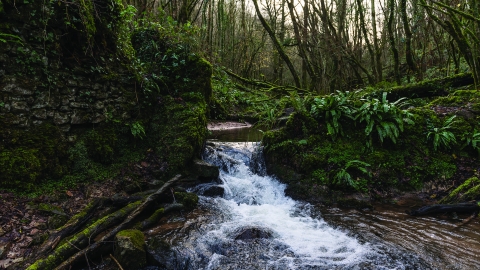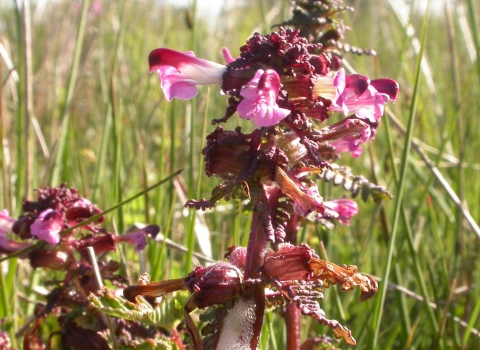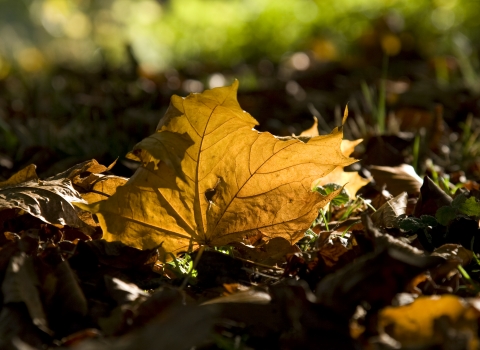Sadly this woodland is badly affected by ash die back. This means that the ash trees are not in good health, they and their limbs are prone to failing and falling. We have carried out tree works around the footpaths in Harridge to make them safer, and continue to do so, please stick to the paths and do not visit in high winds. The footpath along the bottom of Home Wood remains closed.

Harridge Woods - Matt Sweeting
Know before you go
Dogs
Visit the 'Dog walking on reserves' page in the Contact section for more information.
When to visit
Opening times
Sadly this woodland is badly affected by ash die back. This means that the ash trees are not in good health, they and their limbs are prone to failing and falling.Best time to visit
N/AAbout the reserve
The reserve comprises several woodland blocks along the valley of the River Mells.
Harridge Wood West and Limekiln Wood - An ancient woodland that was mostly cleared of its native trees and planted with conifers and poplars during the 1950s and 1960s. It is slowly being returned to broadleaved woodland by thinning the conifers out and allowing natural regeneration. Broadleaved woodland survives along the streams, at the margins and in isolated patches.
Harridge Wood East - The majority of Harridge Wood East had little or no tree cover during the time it was being mined for coal. It was planted with conifers in 1966 but the plantings were poorly maintained and the majority of trees have not grown well allowing a semi-natural element to survive and regenerate, especially along the stream and road edges. It is slowly being returned to broadleaved woodland by thinning the conifers out and allowing natural regeneration.
Home Wood - Home Wood is ancient woodland, primarily consisting of Ash, with occasional English oak and an under-storey of Hazel, with Field Maple, Hawthorn and Blackthorn. This shady, humid limestone woodland is important for mosses and a great variety of species can be found along with numerous liverworts and lichens.
Edford Wood South - This is another ancient woodland that has a luxuriant and species rich ground flora. There are several sizeable English Oak standards (probably than 200 years old) and there is much Alder by the river. Ash and Hazel are also abundant. Much less common are Wych Elm and Mountain Ash, the latter species indicating more acid soils.
The whole reserve and the Mells River - All of the woods support populations of Badger, Roe deer and Grey Squirrel, in addition to common smaller mammals such as Wood Mouse and Bank Voles. A rich variety of woodland birds are found in the reserve including Great Spotted Woodpecker, Green Woodpecker, Nuthatch and Goldcrest. Song Thrushes are also relatively common and Sparrowhawk, Kestrel, Buzzard and Raven nest locally. The diversity of the bird life of the reserve is further enhanced by the presence of the river and streams, which provide habitats for a variety of species including Mallard, Moorhen, Grey Heron, Grey Wagtail, Kingfisher, and Dipper; the latter species regularly nesting along the river in Edford Wood South. The freshwater life in the river and streams is diverse and includes the non-migratory Brown Trout. Palmate Newt and the Great Crested Newt have both been recorded here. The Mountain Bulin Snail and the Large Chrysalis Snail (a nationally notable species) have also been recorded in Harridge Wood West and are likely to occur elsewhere within the woods. In spring, and before the woodland canopy closes over, the woodlands come alive with Wood Anemones, Wild Garlic and Bluebells. Later in the year Yellow Archangel and Nettle-leaved Bellflower can be found along light filled woodland paths. Scarcer woodland plants include Solomon’s Seal and the parasitic Toothwort.
Keeper's Cottage and bats - In 2006 funding from the Heritage Lottery Fund allowed us to purchase Keepers Cottage, the old estate workers’ dwelling. It was already a bat roost, and desperately needed protection. The building was secured and works to prevent further dilapidation were carried out, including a new loft and roof works to protect the cellars with nearby larch being felled and used in the construction. Volunteers had a large input into creating the loft space and the bat roosts and still maintain and monitor it now. There are 17 breeding species of bats in the UK which include the endangered Greater and Lesser Horseshoe Bats. The Mendip Hills and the Mells Valley are a very important area for the Horseshoe Bats, with one of the protected Greater Horseshoe Bat roosts being very close to Harridge Woods. Overall the cottage supports the roosting of at least seven species of bats throughout the year; Greater Horseshoe, Lesser Horseshoe, Brown Long Eared, Natterer’s, Daubenton, Pipistrelle, and the very rare Barbastelle. A colony of Natterer’s Bats also hibernate in the damp cave like cellar in the winter.
History and Archaeology - Medieval and post-Medieval coal mining remains can be found across the reserve. From about 1300 AD part of the wood was the scene of coal mining, which continued until around 1800. The traces of mining have been well preserved, and are now a scheduled site. In the early days miners excavated the coal using bell pits, where they dug a shaft down to the coal, then excavated as wide an area round the foot of the shaft as was safe, giving it a bell shape. They then moved to a nearby location and repeated the process, spacing the shafts close enough to minimise wastage. 52 bell pits have been found in Harridge Wood East, the largest with a diameter of 25 metres (82 ft). Adits have also been found, horizontal passages for accessing the mines or draining waters, and leats that carried water to power machinery or drained water. There are numerous mounds of excavated material and the remains of several shaft.


